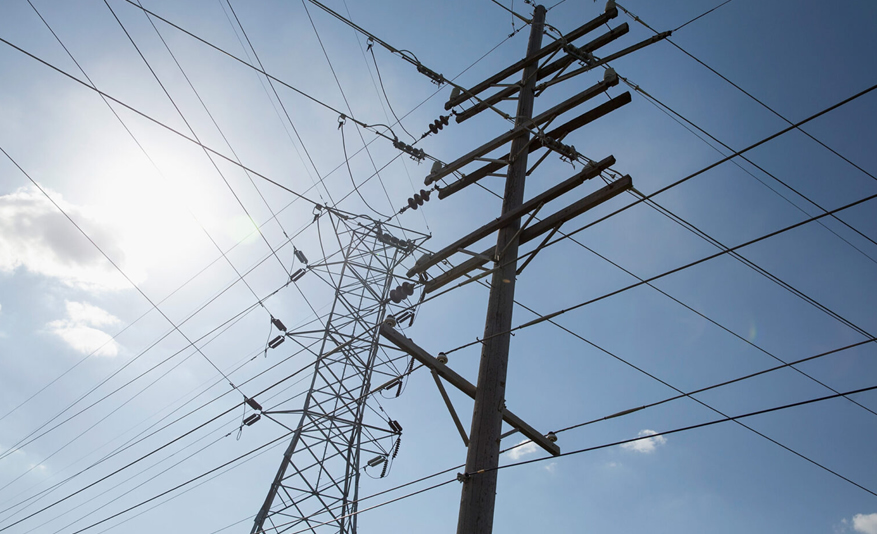Electricity need in Ontario is growing faster than expected — so much that the province's electrical system operator now anticipates an increase in demand of 75 per cent by 2050.
The projected increase would push provincial demand to more than 260 terawatt hours per year by two-and-a-half decades from now. The Independent Electricity System Operator (IESO) also expects 58 per cent of the projected growth to happen by 2035.

IESO announced its adjustments as part of its annual demand forecast, which it released on Wednesday. Last year, the Crown Corporation had estimated 65 per cent higher electricity demand by 2025.
"You could equate this to adding a city, the size of Toronto to the grid," IESO's vice president of planning Chuck Farmer said during a technical briefing with media on Wednesday.
Energy Minister Stephen Lecce said the forecast is "going to raise the game of everyone in government" to find generating capacity and promised he will release a new "vision" for how to do that "in the coming days."
Much of the increased electricity demand is from the industrial sector, especially from data centres and the switch to so-called "green steel," according to Farmer. He said "considerably higher" electricity demand from industry is "quite a good news story for the province," as it shows that industrial users have "started to reshore into North America and into Ontario."
New industrial operations are included in the energy demand forecast once companies start making their plans in Ontario "more concrete," explained Farmer, by making a public announcement or applying to the IESO their operations connected to the provincial energy grid."
Because of this, the IESO's projections included 16 new energy-intensive data centres that are expected to open in Ontario by 2035. These data centres, which are essentially buildings filled with computer servers and high-powered air conditioning, are expected to contribute 13 per cent of the new growth in electricity demand by 2035, and will account for four per cent of all demand on the power grid.
Not only will there be more data centres, but the rise of artificial intelligence is also causing their operations to consume more energy.
"If you do a search using a regular search engine like Google, it takes so much power. If you do have an AI search, it takes several times the same amount of power," Farmer explained, who noted that other power grid operators across North America are also "dealing with this sudden surge of demand" from technology companies rolling out AI-powered services.
"The energy use that data centres require because this AI functionality is infinitely higher than it was previously," he said.
The IESO has been notified that more steel companies in Hamilton are planning to follow Algoma Steel's lead by making the switch from fossil fuel-powered blast furnaces to electric arc furnaces.
"We've received interest from the other steel makers and indications of plans that will go ahead in the Hamilton area. So we're accounting for that in the forecast," said Farmer.
The forecast does not say how the province will meet new energy requirements.
Lecce, the province's energy minister, said the plan the government will announce soon will continue to use natural gas as an "insurance policy" while also emphasizing expanding the use of nuclear energy in Ontario.
"Nuclear, fundamentally, is going to be the anchor of our solution," Lecce told reporters.
"We're going to lean into every resource, but non-emitting sources like nuclear will play a fundamental role to figure to delivering that base load, reliable, enduring energy that we need. And clearly, today's IESO forecast demonstrates that we need to act with a sense of urgency."
Lecce noted the government is already pushing ahead on nuclear power, including by keeping reactors five through eight at the Pickering Nuclear Generating Station running until 2026, a couple of years past their previously scheduled decommissioning, by building four small nuclear modular reactors at Darlington, and with Bruce Power working on a major expansion of its nuclear power plant.
Lecce said the new energy plan will prioritize "affordability" but brushed off questions about the high upfront costs and long construction times of nuclear energy facilities.
"We have an incredible story of building on time and on budget, which perhaps is a rarity in the space. But we're doing something right in this province," he said.
Green Party Leader Mike Schreiner said the increase in electricity demand is a good thing because it shows increasing electrification across Ontario. He does still worry about what will be in the government's new energy plan.
"My concern is, is the government's going to choose an expensive, dirty approach: ramping up gas plants, which is what they have been doing," Schreiner told reporters at Queen's Park.
"It makes absolutely no sense when wind, solar, battery storage and water power are far cheaper, far cleaner, and can be deployed much faster," the Green Party leader said.
After the IESO announcement, Lecce participated in the groundbreaking of a new battery storage facility outside Newmarket. The York Battery Energy Storage System will have the capacity to store 120 megawatts of electricity.



















































